Bridge Inspections: 5 Challenges Every Asset Manager Faces
Inspections are the primary way we assess a bridge’s condition, but traditional methods have their limitations. AI and Machine Learning offer new...
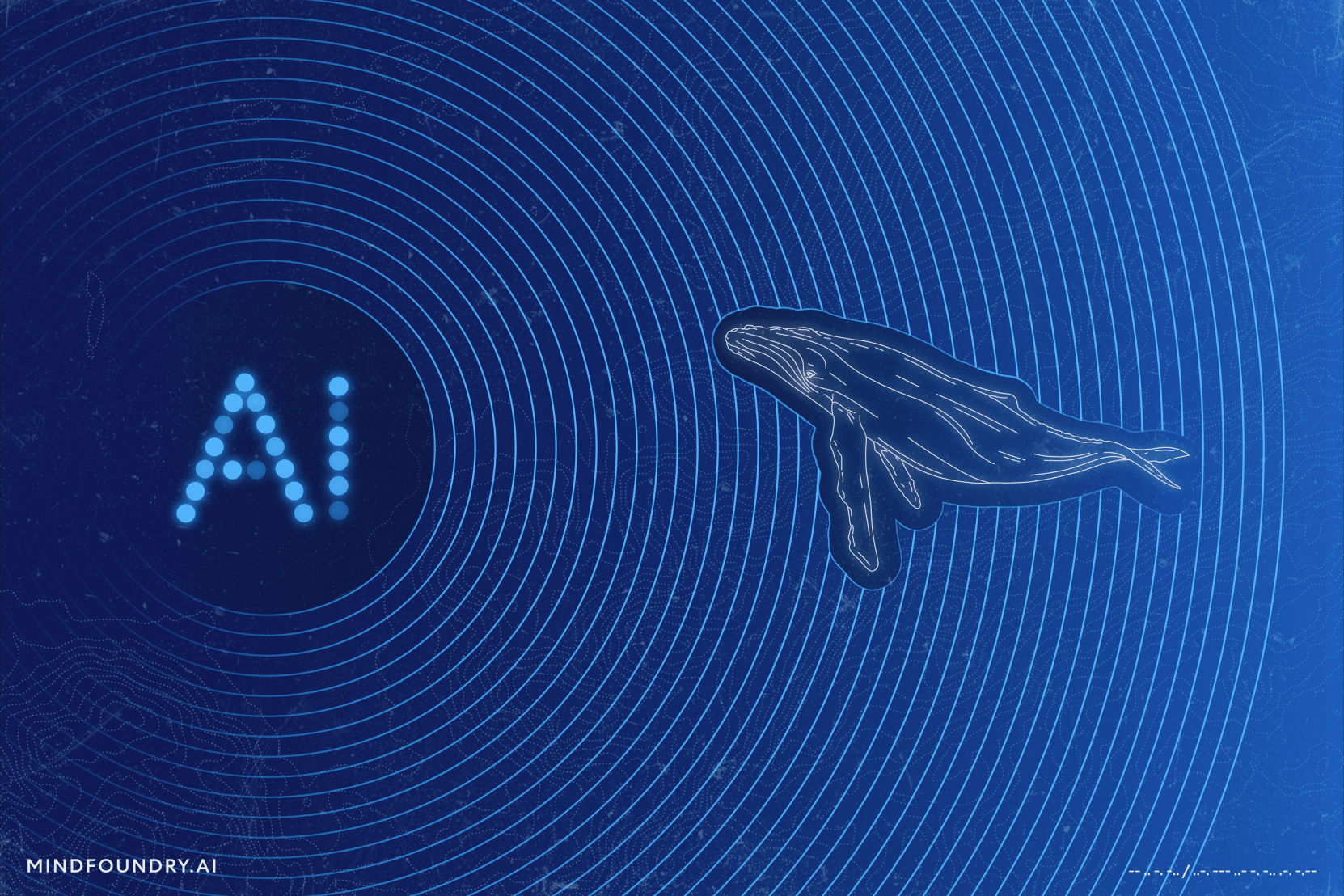
In the maritime domain, gaining a better understanding of increasing volumes and higher fidelity sonar data has well-known and potentially game-changing advantages. Nevertheless, in complex problem spaces like those in defence and national security, it’s not just a question of volume. Data must be processed accurately and at mission-relevant speed to realise operational advantage. AI promises huge opportunities to help achieve this in place of traditional approaches, but there are several challenges in the space that make this potential difficult to realise.
A Look at the Current Landscape
A dramatic rise in global geopolitical tensions has seen global defence spending increase by 9% to a record $2.2 trillion during 2023. Hardware superiority is no longer sufficient to ensure victory. The expected overrunning of Ukrainian forces by the far larger and better-reinforced Russian forces never materialised, and an expected swift Russian victory has given way to a dogged war of attrition with no clear end in sight. Once again, it is demonstrated that the cohesion and strategy of technology usage can supersede the quality and quantity of arms. Untapped information sources and data streams promise rich pickings for improved planning, but only if they can be harnessed effectively. To maximise the impact of increased spending, the UK and its allies must not only continue to invest in high-specification hardware. We must also consider how it can best be protected and deployed.
The importance of turning data into knowledge is especially prevalent in the underwater battlespace. Here, forces rely heavily on sonar technology to navigate, detect threats, and protect critical undersea infrastructure. The ability to process vast amounts of sonar data quickly and accurately into actionable intelligence is more than just important; it’s an absolute necessity. However, if more data is collected without effective processing methods, it merely creates more difficulty for already stretched operators who simply don’t have time to analyse it at the necessary speed. This is one of the most fundamental challenges in the underwater domain, and any solution must be robust against various complications and external factors.
A Complex and Noisy Problem Space
Both active and passive sonar receive audio data from sound picked up by transducers. The distinction lies in passive sonar systems’ lack of sound pulse emission. Instead, they ‘listen’ like a conventional microphone for sound emitted by other objects. Advances in sensor hardware, falling costs, and new sensor deployment modes have led to an explosion in the volumes of data that are being collected by these sonar systems. This collected data does not represent value in and of itself though, as it needs to be processed to extract information, such as detecting, classifying and localising contacts of interest. Only once data has been processed into actionable intelligence can operators use it to inform decision-making.
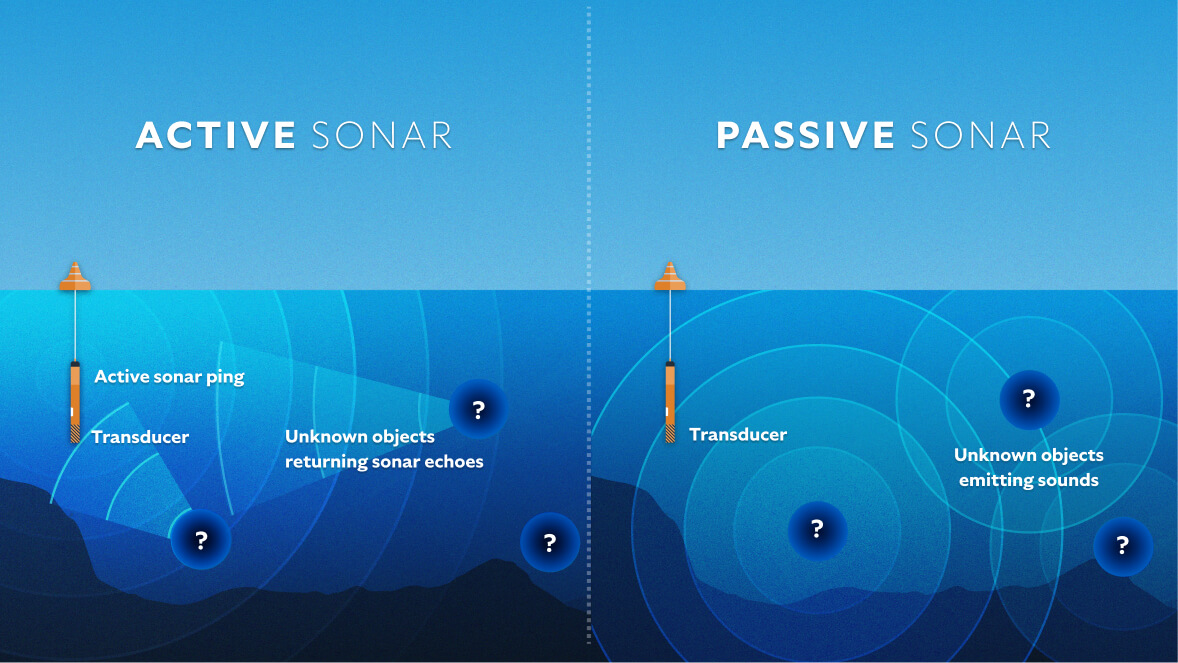
Active sonar systems emit pings and identify objects in the environment using the returning echoes.
Passive sonar systems listen silently for underwater sounds from objects in the vicinity.
Difficulties in sonar signal processing derive from noise intensity, the complexity of non-linear propagation pathways, and huge environmental variability in the undersea space. Sounds are detectable up to hundreds of miles away in the case of seismic activity or whale calls. The resulting signals detected by any sensor are a combination of many different sources, from fishing vessels and earthquakes to organic life, as well as other signals of interest. These complex audio traces contain all these components simultaneously, some of which will be incomplete or arrive at varying times as they travel across different sound propagation pathways. The detected signals are further affected by environmental factors such as water temperature and salinity, currents, seabed material, and weather.
The fundamental challenge for sonar operators is extracting salient information from the noisy environment to identify potential anomalies and threats. With multiple sensors collecting so much data as a combination of multiple competing and conflicting signals, the scale of this challenge is clear.
Time Pressure
The quantities of collected data have become so vast that they have outstripped the ability of operators to process them effectively in operationally relevant timescales. Huge arrays of sonar sensors mean that thousands of combinations of sensor outputs can be generated mathematically (beamforming), enabling operators to focus on sounds originating from different directions. These thousands of options, however, represent an increased problem in that there are too many for an operator to sift through manually.
The risk and volatility of the modern naval battlespace necessitate the rapid processing of data to enable quick decision-making. However, effectively processing sonar data using existing practices takes time, and in real-world environments where decisions need to be reached almost instantly, time is not a luxury that sonar operators can often afford. The result is that operators can only listen to part of the space, and even within this, they may miss signals due to the many overlapping signatures or signature distortion due to environmental effects.
The hardware, the sensors, and the raw data containing the required information are already in operation. However, without the capabilities to turn that data into actionable decision intelligence, the full potential advantage is not being realised. More data is not the answer; more intelligent processing must be explored.
An Opportunity for AI
Much of the current discussion around AI centres on the societal impact it could have, but only in a generation-after-next capacity. Instead, what we should address are the ways in which AI can already help to solve real-world problems in short-term time frames. Currently, one of the most significant benefits of AI is automation and the rapid completion of tasks that would normally require significant time and human resources. This also rings true in the sonar space. AI is ideally suited to reduce the cognitive burden on sonar operators when harnessed in noise reduction and distraction removal, enabling better prioritisation of already limited human focus and time.
AI-enabled signal processing techniques can ingest large volumes of high throughput multichannel data, not just from sonar but also from cyber, EM, geospatial, and more. There are, of course, challenges in gaining access to relevant training data in sensitive domains like sonar, which means that conventional, data-intensive approaches can struggle to get off the ground. Instead, a more effective approach is to combine traditional approaches with AI, directly encoding human understanding of the maritime domain to simplify problem spaces and reduce training data requirements. This enables systems to make more sense of complex signal types than conventional techniques alone. By deconstructing inputs to their basic components and recombining them as outputs informed by human domain expertise, data can be harnessed far more efficiently.
The sonar space is clearly challenging for AI deployment and robust performance. Nevertheless, by combining human sonar expertise with broad and deep knowledge of applicable AI techniques in carefully designed architectures, AI can have a meaningful impact that doesn’t require generation-after-next technology. Performant models for signal processing can enable human operators to make sense of unfolding and changing contexts rapidly. Starting from the perspective that AI is a genuinely performant solution that can deliver value now, combined with a real understanding of the complexity of sonar challenges, we maximise the performance of these systems at scale.
By designing for deployment, we can build solutions that can solve real-world problems, not just perform well theoretically. In the increasingly competitive and strategically critical maritime domain, this is an opportunity which must not be missed.
Enjoyed this blog? Read more about Why AI is More than Just an Innovation Opportunity.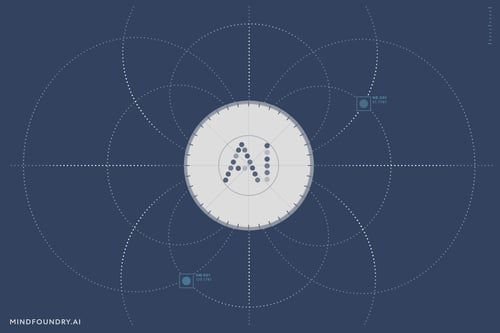
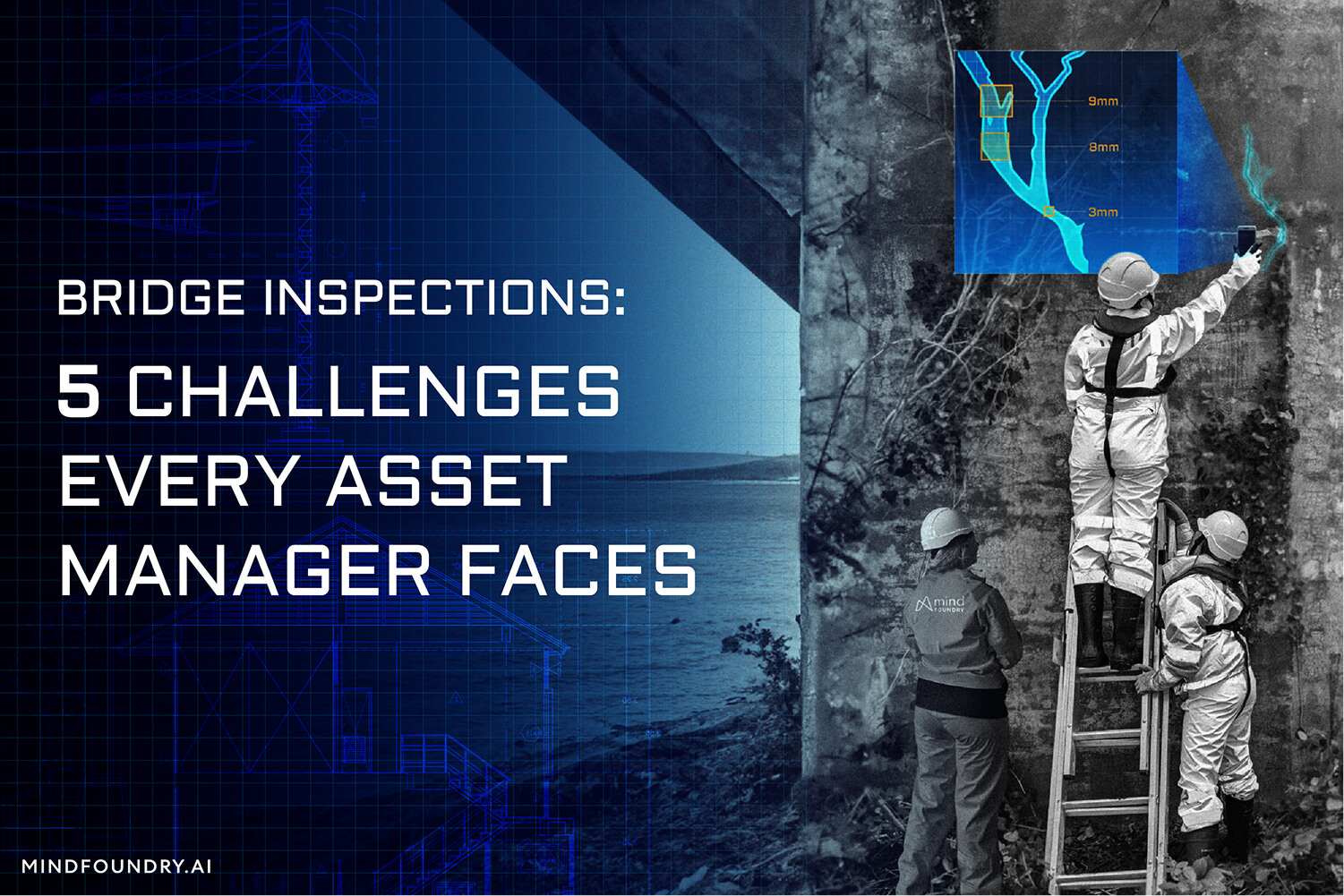
Inspections are the primary way we assess a bridge’s condition, but traditional methods have their limitations. AI and Machine Learning offer new...
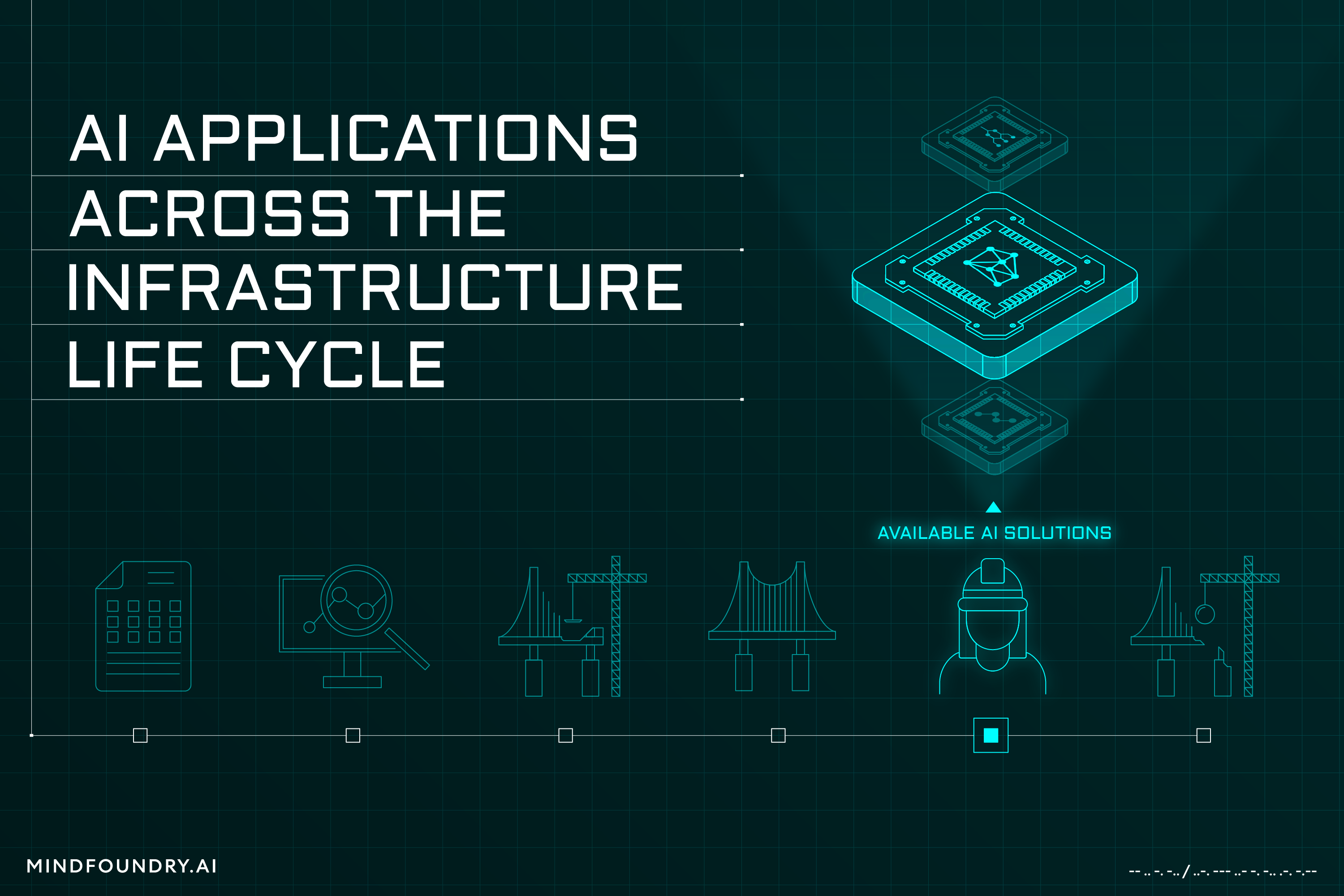
From planning to decommissioning, every stage of the infrastructure asset life cycle has its own priorities and needs. Here are the ways that AI can...
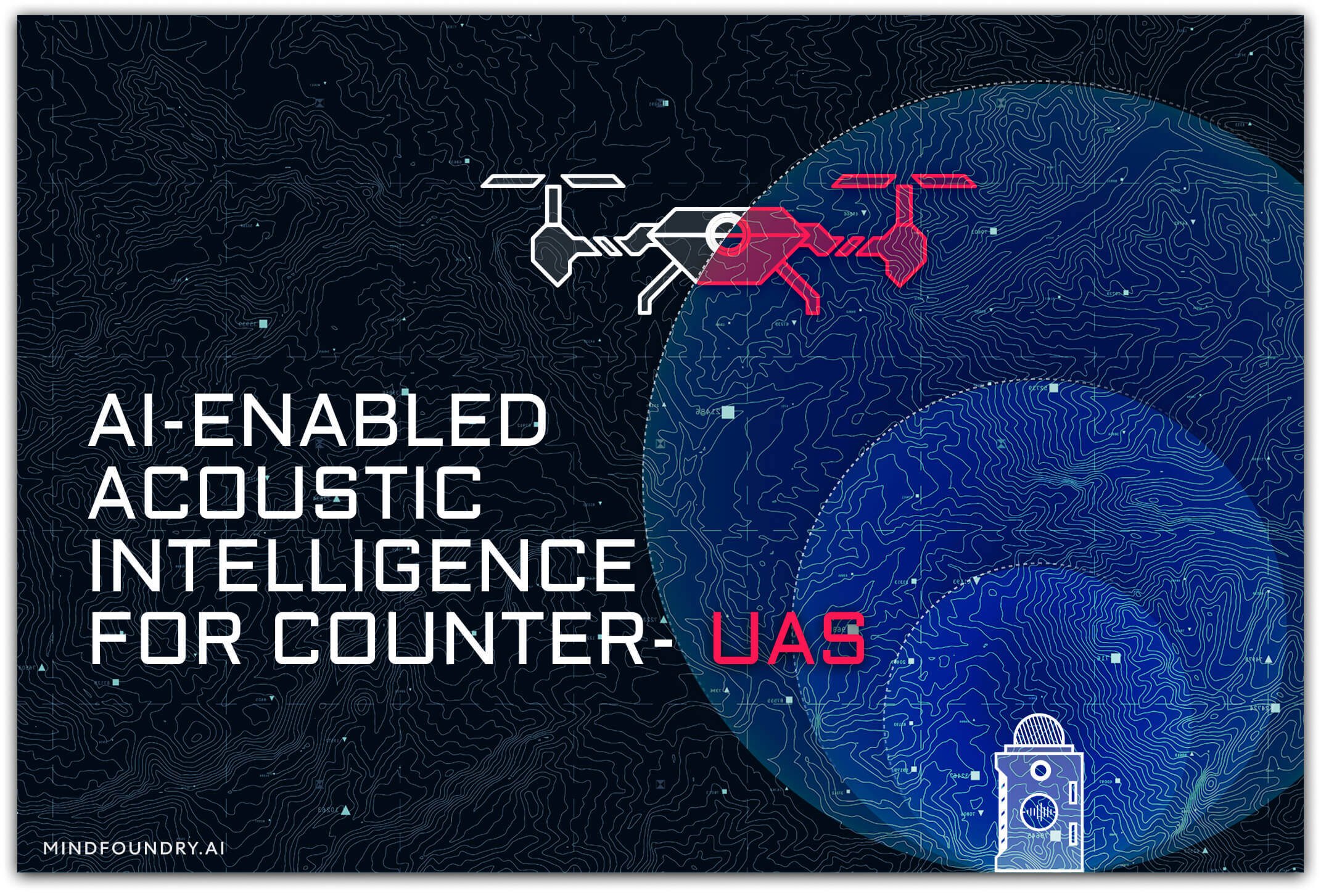
Unmanned Aircraft Systems (UAS) are now a staple of modern warfare, now responsible for 60% of targets destroyed in the Ukraine-Russia war....